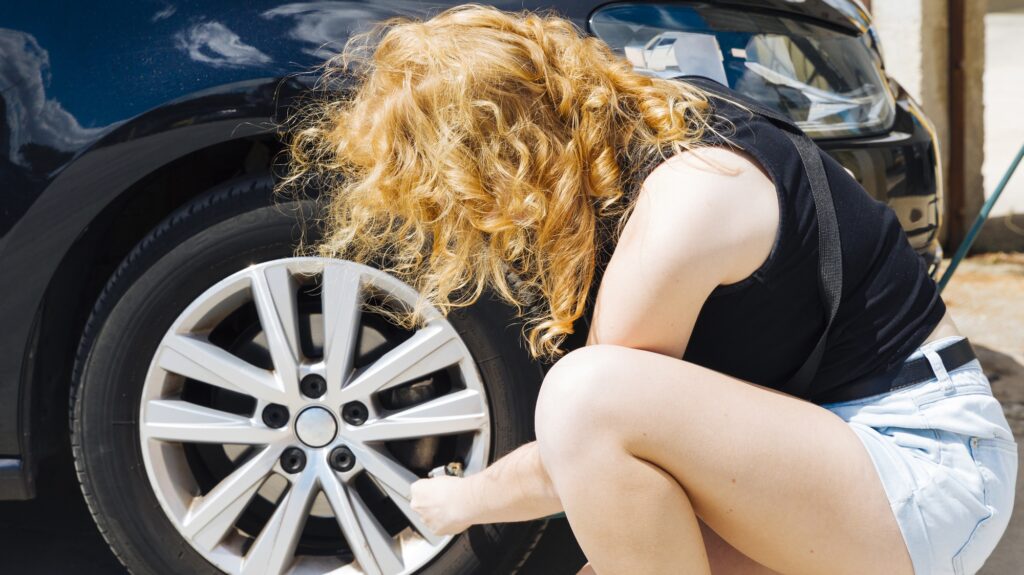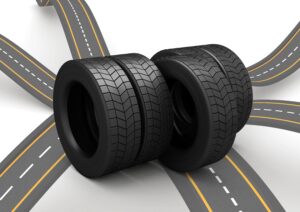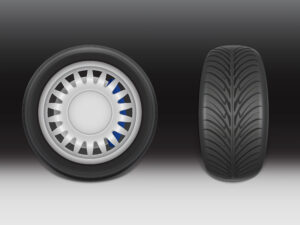Grand Vitara Tyre Pressure Guide – Optimal PSI, Best Tyres & Maintenance Tips

Maintaining the correct Grand Vitara tyre pressure is crucial for the safety, performance, and longevity of your vehicle. Whether you’re driving in the city, on highways, or off-road, ensuring that your tyres are properly inflated has a direct impact on vehicle handling, fuel efficiency, and overall driving comfort. In fact, the correct Suzuki Grand Vitara tyre pressure enhances the lifespan of your tyres and helps you avoid costly repairs.
In this guide, we will cover everything you need to know about the optimal tyre pressure for Grand Vitara, how to check and maintain it, the best tyres to consider, and some valuable maintenance tips to extend the life of your tyres. By the end, you will have all the tools and knowledge needed to keep your tyres in top condition, enhancing both your driving experience and vehicle performance.
Recommended Tyre Pressure for Grand Vitara
The Grand Vitara tyre pressure can change depending on the type of driving you’re doing, whether you’re carrying a heavy load, or the specific model year. It’s essential to refer to your owner’s manual or the placard inside the driver’s side door for the most accurate recommendations. Here’s a general overview:
For normal driving conditions, the typical Suzuki Grand Vitara tyre pressure is:
- Front Tyre Pressure: 32 PSI
- Rear Tyre Pressure: 30 PSI
However, these values may change under certain circumstances:
- Heavy Load or Towing: Increase PSI by 2-3 units for both front and rear tyres.
- Eco Mode or Comfort Driving: You might want to lower the PSI slightly to improve comfort and fuel efficiency (about 1-2 PSI lower).
By maintaining the proper tyre pressure, you ensure that your vehicle drives smoothly, safely, and efficiently. When your tyres are properly inflated, it also enhances braking performance, especially in emergency situations, while also reducing the risk of blowouts and increasing tyre life.
How to Check & Maintain Grand Vitara Tyre Pressure
Maintaining the correct Grand Vitara tyre pressure is easy if you regularly check it. It’s recommended that you perform this task at least once every two weeks, or before embarking on long journeys. Here’s how you can do it:
- Gather the Right Tools: All you need is a digital tyre gauge and a tyre inflator. These tools are affordable, easy to use, and can be found at any automotive store.
- Check the Tyre Pressure: Make sure to check the tyre pressure when your tyres are cold—before you drive or after the car has been sitting for a few hours. Tyre pressure increases as you drive, and you might get a falsely high reading if the tyres are hot.
- Use a Tyre Gauge: Place the digital tyre gauge on the valve stem of each tyre and press the button. The digital screen will show the PSI. Compare this value with the recommended PSI for your Suzuki Grand Vitara tyre pressure.
- Inflate as Needed: If the tyre pressure is low, use the inflator to pump air into the tyres. Once the tyre is at the correct PSI, recheck it with the gauge.
- Regular Monitoring: If you’re using your vehicle frequently, it’s a good practice to check the tyre pressure once every two weeks. This ensures that your tyres are always operating under optimal conditions.
By regularly checking your Grand Vitara tyre pressure, you can prevent excessive wear, improve fuel efficiency, and keep your vehicle performing optimally.
Best Tyres for Grand Vitara (2025 Edition)
When choosing the best tyres for Grand Vitara, it’s important to consider factors like road conditions, driving style, and weather conditions. Below, we have listed some of the top tyres suitable for the Suzuki Grand Vitara in 2025:
1. Bridgestone Ecopia
The Bridgestone Ecopia is ideal if you’re focused on maximizing fuel efficiency. These tyres are known for their eco-friendly design and reduce rolling resistance, improving gas mileage. They also provide a quiet and smooth ride, although they may not be the best option for heavy off-roading.
2. Michelin Primacy
If comfort is a priority, the Michelin Primacy tyres are an excellent choice for your Grand Vitara. These tyres are built for a smooth, quiet ride and deliver exceptional handling and braking performance. They also last longer than many other brands, offering great value for money.
3. Goodyear Assurance
The Goodyear Assurance tyres are designed with wet conditions in mind, providing excellent traction on wet roads. They are durable, provide excellent stability, and are ideal if you live in an area with frequent rain. However, they might be a little noisier than other options at higher speeds.
4. Continental CrossContact
For those who enjoy off-roading or driving in challenging terrains, the Continental CrossContact tyres are an excellent option. These tyres are durable and designed for rough road conditions, offering superior traction on dirt and gravel. They also perform well on highways, ensuring stability and comfort during long drives.
Factors Affecting Tyre Pressure & When to Adjust It
Several factors can affect your Grand Vitara tyre pressure. Here’s a look at when and why you may need to adjust it:
- Seasonal Changes:
During colder months, the air inside your tyres contracts, lowering the PSI. To counter this, it’s a good idea to add a little extra air (2 PSI) to your Suzuki Grand Vitara tyre pressure during winter months. Conversely, in hot weather, the pressure can increase due to the expansion of air. Check your PSI more frequently during seasonal changes. - Load & Passengers:
If you’re carrying a heavy load or driving with multiple passengers, the additional weight may require an increase in tyre pressure. It’s best to refer to your vehicle’s manual for the exact adjustment. - Driving Conditions:
For highway driving, slightly higher PSI may help with fuel efficiency and stability at high speeds. On the other hand, city driving or stop-and-go traffic can benefit from a lower PSI for more comfort.
Common Tyre Pressure Myths & Mistakes to Avoid
There are several myths and common mistakes when it comes to Grand Vitara tyre pressure. Here are a few you should avoid:
- Over-inflation vs. Under-inflation:
Both over-inflation and under-inflation are harmful. Over-inflated tyres can lead to a rougher ride, less traction, and increased wear in the middle of the tyre. Under-inflated tyres, on the other hand, cause uneven tread wear and can lead to dangerous blowouts. - Myth: “Higher tyre pressure always leads to better mileage.”
While higher tyre pressure can improve fuel economy to a degree, it’s not always the best solution. Too much air can cause poor handling and an uncomfortable ride, especially on uneven surfaces. - Mistake: Forgetting the Spare Tyre:
It’s easy to forget, but checking the spare tyre pressure is just as important as the regular tyres. The spare tyre can be a lifesaver in case of an emergency, so always ensure it’s properly inflated.
Grand Vitara Tyre Maintenance Tips
Proper tyre maintenance is essential to ensure the longevity and safety of your tyres. Here are some tips to follow:
- Rotate Tyres Regularly:
To ensure even wear, rotate your tyres every 10,000 km. This extends the life of the tyres and ensures better handling and comfort. - Wheel Alignment:
A wheel alignment every 5,000 km can help prevent uneven tread wear. Misalignment can cause your tyres to wear out prematurely and affect driving stability. - Tyre Balancing:
Regular tyre balancing will reduce vibrations and ensure a smoother ride. It also helps maintain even tyre wear, promoting better fuel efficiency.
Where to Get Professional Tyre Services?
For professional help with your Grand Vitara tyre pressure, Kwikfix Auto offers excellent services in Mumbai:
- Tyre Air Pressure Check & Adjustment
- Puncture Repair at Your Location
- Wheel Alignment & Balancing
- Battery Jump-Start & Car Breakdown Assistance
Book a service now! Call +91 9950 345 345 or visit Kwikfix Auto
Conclusion
In conclusion, maintaining the correct Grand Vitara tyre pressure is essential for safety, performance, and longevity. Regular checks and proper tyre care can improve fuel efficiency, extend tyre life, and enhance driving comfort. By following the tips and recommendations in this guide, you can ensure that your Suzuki Grand Vitara tyre pressure is always optimal, keeping your vehicle in top shape and ready for any road ahead.
Frequently Asked Questions
Q1. What is the recommended tyre pressure for Grand Vitara?
Ans. The recommended tyre pressure for standard driving conditions is 32 PSI for the front tyres and 30 PSI for the rear tyres.
Q2. How often should I check the tyre pressure in my Grand Vitara?
Ans. It’s a good idea to check your Grand Vitara tyre pressure every two weeks or before embarking on a long journey.
Q3. Can incorrect tyre pressure affect fuel efficiency?
Ans. Yes, both under-inflation and over-inflation can reduce fuel efficiency by increasing rolling resistance and affecting the way your tyres make contact with the road.
Q4. How can I tell if my tyres need more air?
Ans. If your Suzuki Grand Vitara tyre pressure is too low, you may notice that your tyres look visibly flatter, or you might experience sluggish acceleration and reduced handling performance.
Q5. What are the best tyres for the Suzuki Grand Vitara in 2025?
Ans. Some of the best tyres for the Grand Vitara include Bridgestone Ecopia, Michelin Primacy, Goodyear Assurance, and Continental CrossContact—each catering to different needs like fuel efficiency, comfort, and off-road performance.
Q6. Can I use any tyre for my Grand Vitara?
Ans. No, always ensure that the tyres you choose meet the specifications recommended by the manufacturer for your Suzuki Grand Vitara.
Q7. What happens if I drive with low tyre pressure?
Ans. Driving with low tyre pressure can lead to poor handling, increased fuel consumption, uneven tyre wear, and a higher risk of a blowout.
Q8. Should I check the spare tyre pressure?
Ans. Yes, you should always check the spare tyre pressure to ensure it’s ready for use in case of an emergency.





